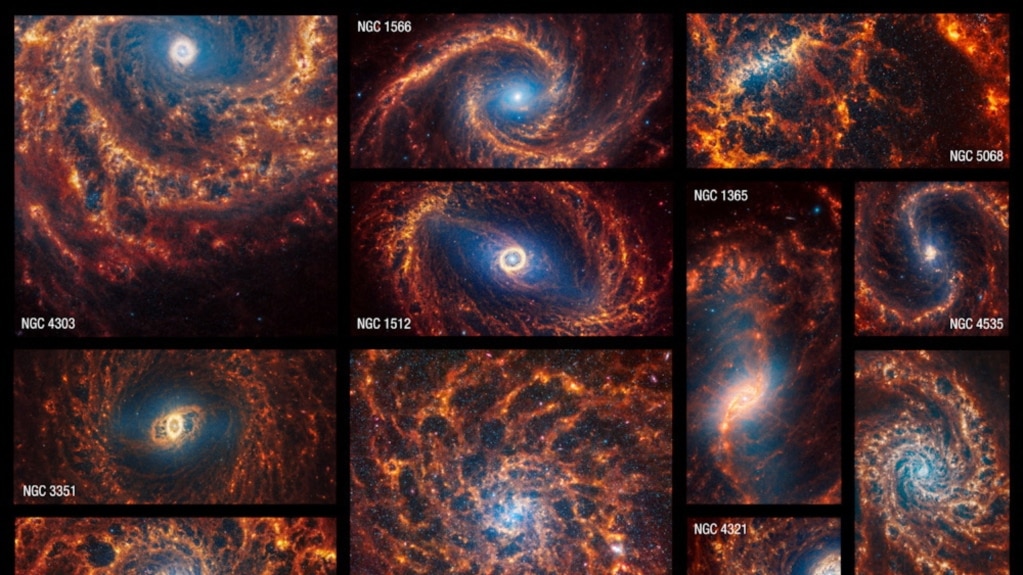Newly released images captured by the James Webb Space Telescope show 19 spiral galaxies relatively close to our Milky Way. The images offer new information on star formation, galaxy structure and evolution.
The images were made public on Monday by a team of scientists involved in a project called Physics at High Angular resolution in Nearby GalaxieS (PHANGS). The project operates across several major astronomical observatories.
The closest of the 19 galaxies is called NGC5068. It is about 15 million light years from Earth. The most distant is NGC1365, about 60 million light years from Earth. A light year is the distance light travels in a year, which is equal to about 9.5 trillion kilometers.
The James Webb Space Telescope (JWST) was launched in 2021 and began collecting data in 2022. It has shaped understanding of the early universe while taking pictures of space.
The orbiting telescope looks at the universe mainly in the infrared. The Hubble Space Telescope, which was launched in 1990 and is still in use, has examined the universe mostly at optical and ultraviolet wavelengths.
Spiral galaxies are a common galaxy type. Our Milky Way is one.
The new observations came from Webb's Near-Infrared Camera (NIRCam) and Mid-Infrared Instrument (MIRI). They show about 100,000 star clusters and millions, or even billions, of individual stars.
"These data are important as they give us a new view on the earliest phase of star formation," said University of Oxford astronomer Thomas Williams. He led the team's data processing on the images.
Williams added, "Stars are born deep within dusty clouds that completely block out the light at visible wavelengths - what the Hubble Space Telescope is sensitive to - but these clouds light up at the JWST wavelengths. We don't know a lot about this phase.”
About half of spiral galaxies have a straight structure, called a bar, coming out from the center. The spiral arms attach to this structure.
Williams said the commonly held thought is that galaxies form from the inside out. That way, they “get bigger and bigger over their lifetimes.”
The images let scientists for the first time determine the structure of the clouds of dust and gas from which stars and planets form at a high level of detail.
The images are in galaxies beyond the Large Magellanic Cloud and Small Magellanic Cloud. Those two galaxies are near the Milky Way.
Webb's observations build on Hubble's.
Erik Rosolowsky is an astronomer at Canada’s University of Alberta. He said, "Using Hubble, we would see the starlight from galaxies, but some of the light was blocked by the dust of galaxies.”
Rosolowsky added, "This limitation made it hard to understand parts of how a galaxy operates as a system. With Webb's view in the infrared, we can see through this dust to see stars behind and within the enshrouding dust."
I’m Dan Novak.

